Every moment of our lives, our brains are making decisions—big and small. From choosing what to eat for breakfast to deciding on enterprise-level technology investments, the brain is constantly evaluating, predicting, and selecting. At OfficeSolution, we created the Decision Pulse model to align with how the brain naturally operates under pressure, uncertainty, and data overload. But what does neuroscience tell us about how we actually make decisions?
Let’s explore how your brain makes choices—and how Decision Pulse enhances that natural process.
The Brain’s Decision Engine
The decision-making process is driven by multiple brain regions, primarily the prefrontal cortex, amygdala, and basal ganglia. The prefrontal cortex, often referred to as the brain’s CEO, is responsible for rational thinking, weighing consequences, and planning. The amygdala processes emotions and instinctive reactions, often influencing decisions in milliseconds before logic kicks in. Meanwhile, the basal ganglia help reinforce patterns based on prior experience.
This interplay between logic, emotion, and memory makes decision-making a deeply human—but also highly complex—activity.
The Role of Cognitive Load
In fast-paced business environments, cognitive overload is a real challenge. When presented with too many choices, complex dashboards, or conflicting data, our decision-making capacity weakens. Known as decision fatigue, this can lead to either impulsive decisions or complete inaction.
Decision Pulse combats this by structuring data insights in rhythm with how the brain prefers to absorb information—step-by-step, visual, and contextual. It clears mental clutter, helping users stay in the high-performance zone longer.
Why Emotion Matters
Neuroscientists have found that emotion is not the enemy of rational decision-making—it’s an essential partner. Patients with damage to the emotional centers of their brain often struggle to make even basic decisions. That’s because emotion provides the context and urgency behind decisions.
Decision Pulse leverages this insight by layering data with real-world impact—financial risk, team performance, customer experience—bringing emotional relevance to analytics. By presenting the “so what” behind the “what,” it helps leaders move from insight to action.
Aligning with Brain Rhythms
Just as the heart has a pulse, so does the decision-making process. Our brains operate in oscillating patterns—periods of focus, reflection, and intuition. Decision Pulse was designed with this rhythm in mind: starting with clear signals, filtering noise, and prompting timely decisions.
The interface doesn’t just display data—it tells a story. With guided flows and prioritization cues, Decision Pulse syncs with how the brain wants to work: one focused decision at a time.
Final Thoughts
At its core, Decision Pulse by OfficeSolution is about human-centered intelligence. By understanding the neuroscience of how decisions are made, we can build tools that amplify—not overwhelm—our natural cognitive abilities. When data aligns with brain science, decision-making becomes faster, smarter, and more confident.
Learn more about the science and strategy behind Decision Pulse at https://decisionpulsegenai.com. Your brain will thank you.




